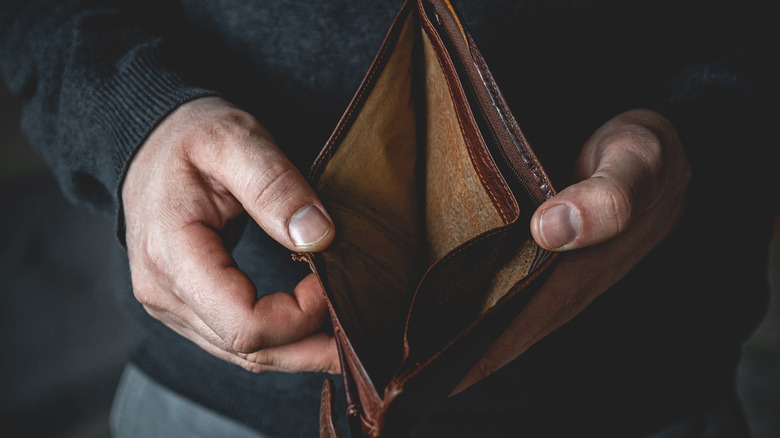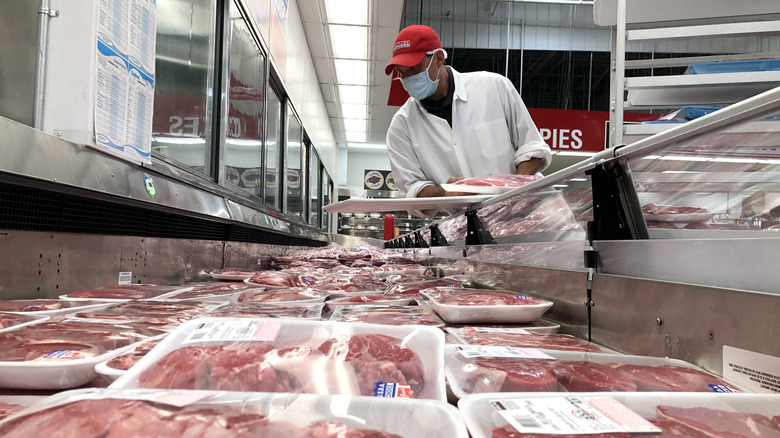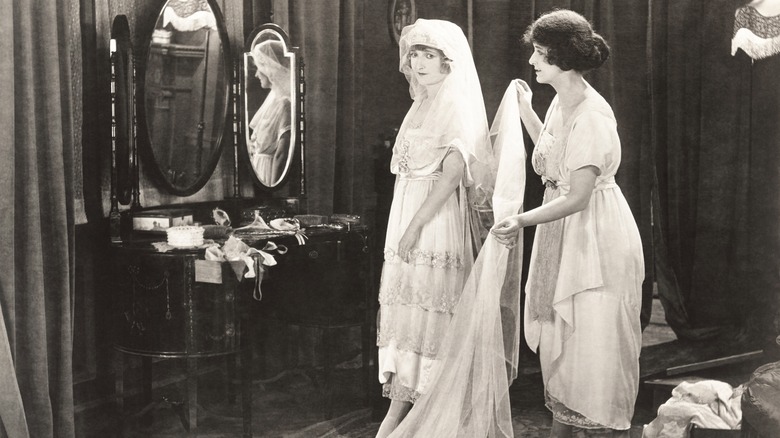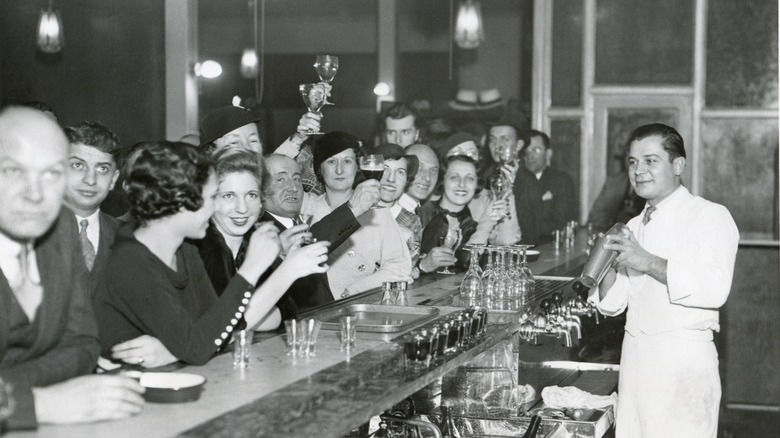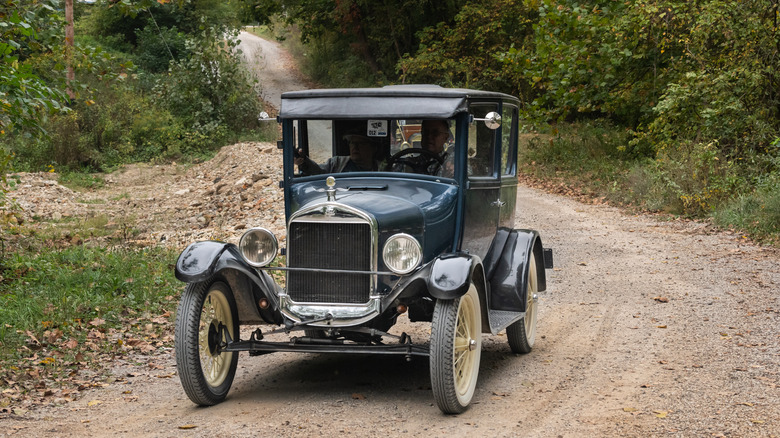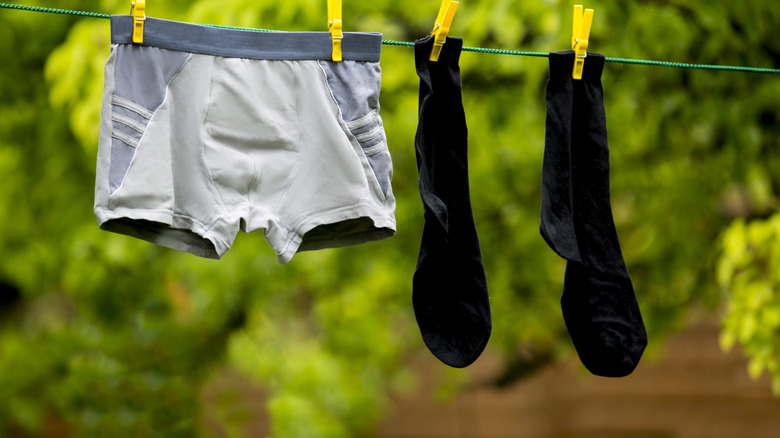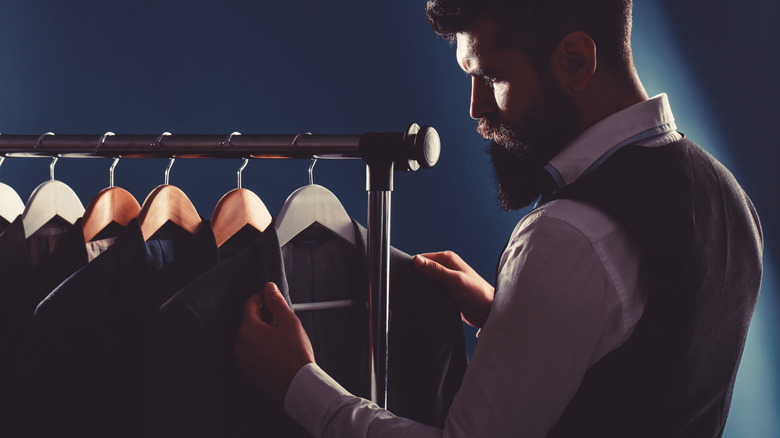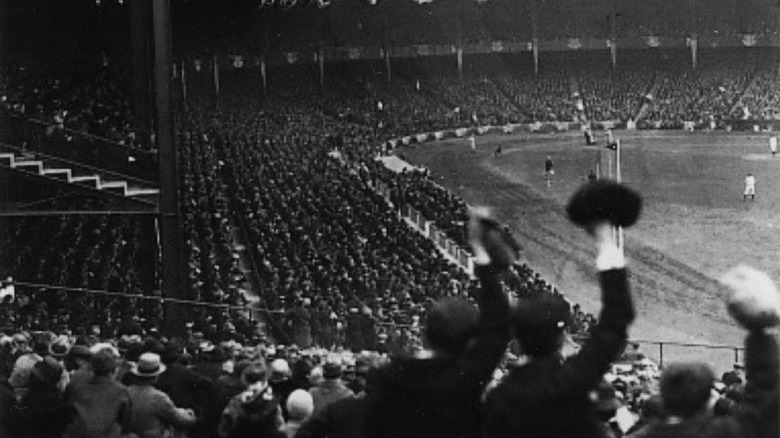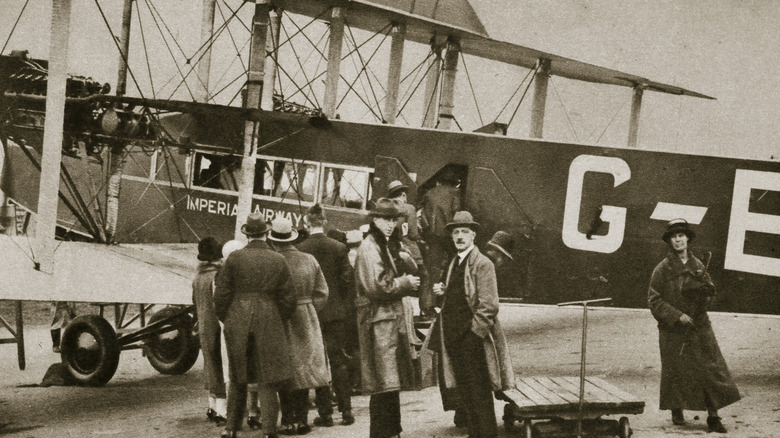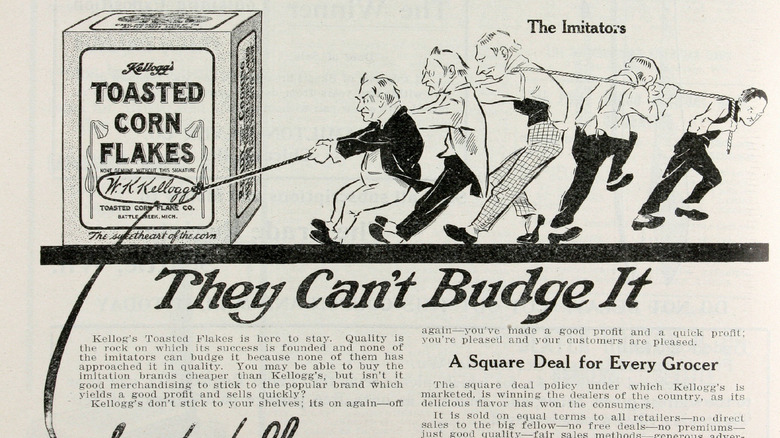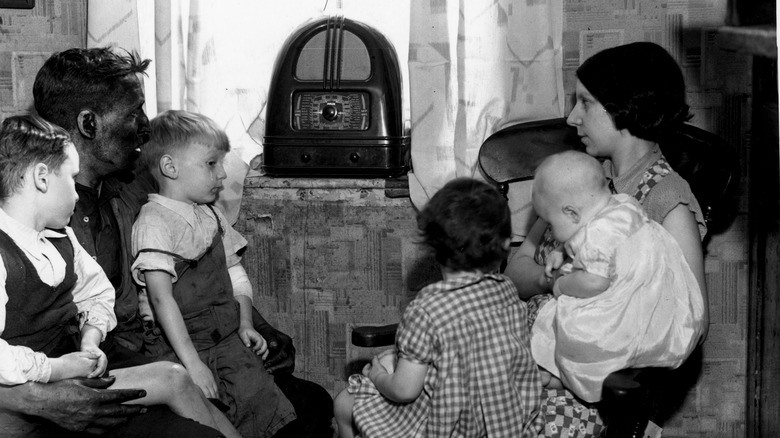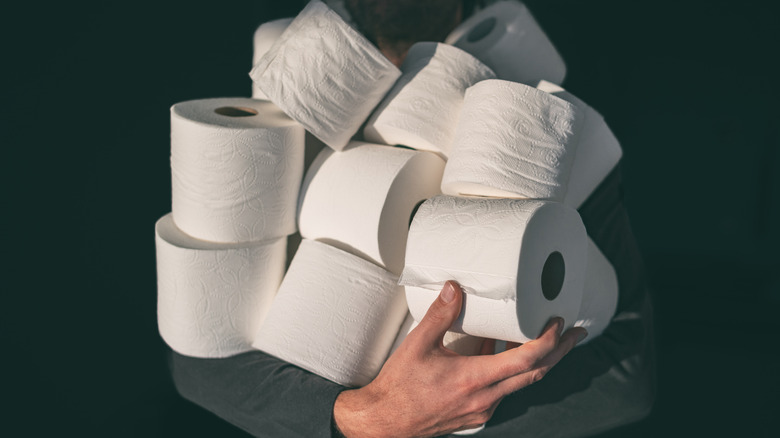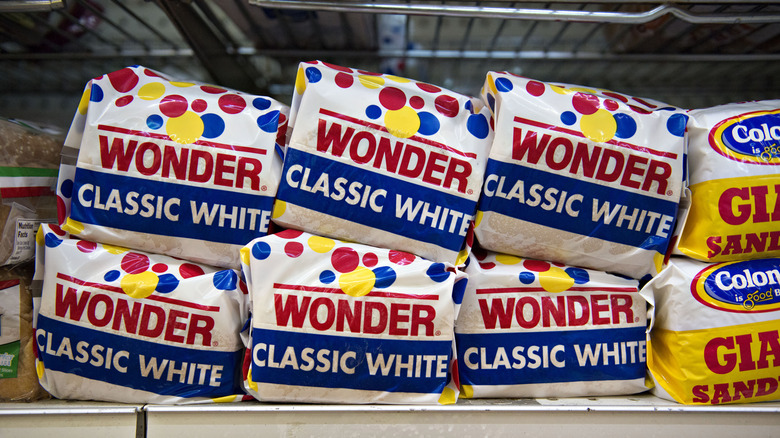How Much Popular Items Cost 100 Years Ago Vs. Today
Doesn't it seem that the prices are always going up? If that's what you think, then you're not alone. Inflation, which is the rise in prices over time, is a natural economic phenomenon.
Howstuffworks explains the logic of inflation — either there is too much money in the economy, which leads to greater demand and pulls up prices, or there is too little of what is needed to produce goods (such as materials and labor) which pushes prices up. Inflation sounds alarming, except that people's wages usually rise with it. For example, according to the IRS in 1921, the average yearly income was $2,938.56, while in 2020, the Census Bureau reported that the median household income was over $67,521. The real question is money's buying power, since as income goes up, so too do prices.
To determine this, there are multiple inflation calculators out there, but the Bureau of Labor Statistics Consumer Price Index inflation calculator is a reliable one. Using it, it says that the $2,938.56 of income in 1921 is equal to almost $43,000 in 2021. But does it really pan out in what you can buy? Get ready to do some historical coupon clipping and sales hunting as we compare the cost of popular items from 100 years ago to that of today.
Sirloin Steak
Vegetarian sentiments aside, beef has always been a popular food item in the United States. According to Business Insider, in 2020, the United States saw $30.3 billion in beef sales. What is more, its popularity is growing, and sales grew by 23.7% in 2020. Beef sales outstripped sales of other meats such as fish and chicken.
One of the most popular forms of beef is steak, which comes in different cuts. These are all priced differently, but sirloin is one of the most popular. Meat lovers will drool at the thought of what people shelled out for the same product in 1921. According to the Bureau of Labor Statistics in 1921, sirloin steak cost a measly 38.8 cents a pound. Adjusted for inflation to dollars today, $5.63 per pound is still a bargain basement price, since, according to the Federal Reserve, sirloin steak in 2021 averaged about $11.00 per pound.
No wonder why families in 1921 consumed about 70 pounds of sirloin per year.
Wedding dress
It is common knowledge that tying the knot can be prohibitively expensive. According to Guinness World Records, the most costly wedding took place in 2004 when the Indian billionaire Lakshmi Mittal's daughter, Vanisha, married investment banker Amit Bhatia. The $55 million extravaganza took place in the Palace of Versailles, the only private event ever held there.
Most people are not going to get married in the palace of French kings, but many are going to shell out a good deal of money for their magical experience. The wedding dress is an essential element in weddings and has a wide array of prices. The wedding blog The Knot says that in 2019, the average wedding dress cost $1,600, which, while sounding like a pretty penny, is better than the whopping $3.5 million dress worn by tennis star Serena Williams, as reported by Brides.
So how did bridal gowns a century ago compare? Prices ranged then, too, but a 1921 article from the Ladies' Home Journal cites that a homemade dress could cost $70, which is a little over $1,000 when adjusted for inflation. For a store-bought dress of decent quality, the minimum was $150, or almost $2,200 when adjusted for inflation. So, surprisingly, the costs of dresses then are comparable to what they are now.
A drink at a bar
From dive bars to high-end dance clubs, people shell out enormous amounts of money for drinks. In 2018, Fortune reported that prices for some cocktails could be as high as $18 (or, sometimes, even higher, depending on where you live). Meanwhile, as Frommers shows, a beer in the United States in 2021 averaged $4.75 per drink. Why so high? Bars and restaurants mark up alcohol sales, which Investopedia says can lead to profits between 200% to 400% with an average price of $8 per drink.
However, if you were going to go to a bar a century ago, you were going to get even more soaked. This was due to Prohibition, which went into effect in 1920 (via History). While Prohibition banned the manufacture and sale of alcoholic beverages, you could still consume it. Thus, there was a very lucrative black market for alcohol, setting the scene for illicit bars called speakeasies. At such places, "Spirits of Defiance" cites that patrons could pay up to $2 for a drink. While $2 may be the diviest dive prices today, when factoring in for inflation, this amounts to over $31 a drink in 2021 dollars.
Passenger car
For some people, cars are a passion, and if they have the means, they will shell out $18.7 million for a Bugatti, as reported by Motor1. For those who just care about their wallets, perhaps they will be interested in the $2,500 Tata Nano, which Driving reports is "the world's cheapest car." However, most people who get a car are going to purchase something in between. CNet reported that in 2021, car prices were seriously escalating, leading to an average of over $45,000 per vehicle — the first time ever crossing that particular price threshold.
How does this stack up to passenger cars a century ago? For a start, the market was different. As related in "Pricing for Profitability," Henry Ford had revolutionized car manufacturing by introducing assembly line methods that greatly reduced production costs. By 1921, this enabled him to price the famous Model T at $440, which equates to $6,352.44 in 2021 dollars. So buying a Model T was like buying two and a half Tata Nanos. That said, Ford was on the low end of pricing for the day. "The Automotive Manufacturer" reported that in 1921, the average retail price for a car was $900 (nearly $13,000 in 2021 dollars). This figure dropped the next year to $700 (a little over $10,000 after inflation) which goes to show how car manufacturers were lowering prices to try to claw into Ford's market share.
Men's underwear
Men's underwear is popular all over the world for obvious reasons. Whether it be tidy whities or the most luxurious silken boxer briefs, underwear encourages cleanliness to your private areas while protecting your outer garments from embarrassing soiling. Sometimes, people take their underwear very seriously. Luxury Launches reported in 2019 that the brand Nice Laundry was selling pairs of 100% cashmere boxers embroidered with 24-karat gold thread for $1,000. However, for those of more modest means, NBC News reported on high quality men's underwear ranging from $6.90 to $75. And if this is too much of a weight on your wallet, there are better deals such as those reported by Business Insider, which includes $16 a month underwear subscription services with MeUndies. Other brands go lower. For example, GQ cites that you can get a three pack of Hanes for $16 — or $5.33 a pair.
So how expensive were these most necessary undergarments a century ago? The Cleveland Trust Company published a bulletin which canvassed prices of items in retail mail order catalogs, and underwear was lsited as 37 cents in 1921. Adjusted for inflation, this would be $5.34 in 2021. So it seems that cheap underwear was in style a century ago.
Movie tickets
A century ago, movies were still in the silent era. The relatively new medium thrilled audiences in 1921 with films like "The Sheik," made them laugh with Charlie Chaplin's "The Kid," or mesmerized them with Rudolph Valentino dancing the tango in "Four Horsemen of the Apocalypse." The silver screen had become a medium of popular culture with attendance, as cited in "The Great Depression," at 40 million per week in 1921.
Back then, ticket prices to the movies varied from theater to theater, but "Republic of Words" cites that a typical movie ticket in 1921 cost 27 cents; when adjusted into 2021 dollars, that's about $3.93. Very cheap, indeed, compared to today. As of 2021, Movietheaterprices shows that some major film outlets — such as AMC — charge over $10 for a children's ticket and over $13 for an adult. IMAX films cost more, going up to almost $20 per adult ticket. These prices can go even higher, depending on where you live.
Business suit
While offices have gone more casual, business suits remain a staple commodity for the corporate and political set. Suits, as with many clothing items, vary greatly by price based on quality. For example, suits worn by Donald Trump in the 2016 election cycle were estimated by Business Insider to cost from anywhere between $6,000 and $17,000. In that same election cycle, Hilary Clinton sported a $12,000 Armani jacket as reported by CNBC. Of course, if you have the wherewithal and really want to make a statement, you can purchase the most expensive suit in the world: the Stuart Hughes Diamond Edition which features ... yes, you guessed it, real diamonds sewn into the fabric (via CEO World Magazine). The price for this gem is $778,290.
Coming back down to earth, Business Insider says that $500 is about the right price for a decent first suit. How does this measure up to a century ago? The Cleveland Trust Business Bulletin cites that the average cost of a men's suit in 1921 was $16.75. If you adjust for inflation, this equates to $234.61 in 2021 dollars. It is possible to buy a suit nowadays at that price, at least according to Gentleman's Gazette, but it will likely be something a bit tawdry.
Footwear
You can't get very far without shoes, and being one of the most essential wardrobe items, it is little wonder that in the United States, shoe sales exceeded $19 billion in revenue in 2019 according to Statista. Some footwear can be very pricey, such as the Diamond Passion shoes. These diamond-encrusted pumps are literally pure gold and are more likely to be found in a vault than on a foot since they run, as Footwear News reports, a mind-blowing $17 million a pair. Fancy shoes aside, Statista says that the average price of footwear in 2020 was $133.24.
So what did you have to shell out for shoes a century ago? According to a 1921 "Changes in the Cost of Living" report published by the National Industrial Conference Board, men's and women's shoes were priced $6.43 and $6.34, respectively, with $6 being the most common price. This might account for women shoes which were, as Footwear News reports, changing style to forms that accentuated the feet better than prior Victorian styles. For men's fashion, dress shoes increasingly became the norm, according to Gentleman's Gazette. So how much would $6 be in today's dollars? It would be $85.99, which indicates that shoes were generally cheaper for people to purchase a hundred years ago, but, then again, they didn't have gold, diamond-encrusted shoes.
Professional baseball tickets
Baseball, as America's pastime, has historically been one of the country's most popular sports. According to ESPN, millions attend professional baseball games. In 2019 alone, attendance at baseball games among the MLB's 30 teams totalled over 68 million. Because of its popularity, tickets, especially for popular teams, are hot commodities.
Statista cites that the average cost of a Major League Baseball ticket in 2021 is $34.21. This price is comparatively low to other sports because baseball has a very long season (via Sportscasting). Still, certain MLB events attract higher ticket prices. For example, the Atlanta Journal-Constitution reported that for the 2021 World Series, tickets averaged $1,633 (including fees). For a seat behind home plate, you would need to be a superfan with a super wallet since the asking price was $10,750.
How does this stack up to World Series past? Keyman Collectibles posted a bleacher ticket for the 1921 World Series of the Yankees versus the Giants at the Polo Grounds. The price as printed on the ticket is $1.10, which equates to $15.88 in today's dollars. Scalpers back then would've probably charged two bucks.
Airplane fare
Airplanes are the most common form of long-distance travel. To give you an idea of how common, the FAA manages about 45,000 flights daily, totalling almost 16.5 million per year. That's a lot of flying, so it is hard to appreciate just how new airlines were a century ago. The first commercial airline in the United States was, as explained by the National Air and Space Museum, founded in 1914. While that venture, which connected St. Petersburg to Tampa, failed in three months, others were founded in the decades that followed.
In these early years, there were startup commercial airlines such as Scaboard Consolidated Airlines which was noted in a New York Times article as beginning a passenger service from New York to Chicago in 1921. The eight-hour trip cost a passenger $51.80 with the airline guaranteeing that every minute that the plane is late will result in a $1 rebate.
This $51.80 in 1921 equates to over $750 today. What do New York to Chicago flights look like in 2021? A search on a travel aggregator site like Kayak, Travelocity, or Orbitz shows that flights now take about two hours and can run anywhere from $200 to $400 (more or less). Air fare has definitely become cheaper for people. This is probably why you don't get rebates if you're a late arrival.
Breakfast cereal
Breakfast cereals are a recent culinary invention. According to the New York Times, the first cereals were invented in the 1860s and had become popular by the early 20th century as a form of ready-to-eat breakfast food. By 1921, wheat cereal and corn flakes were so regularly bought that their pricing was captured by the Bulletin of the U.S. Bureau of Labor Statistics.
For an 8-ounce package of cornflakes, you might have had to expect to shell out 12.6 cents in 1921. If you'd like to equate that with a typical 12-ounce box that you see on supermarket shelves today, it would be 18.9 cents. When adjusted for inflation to today's dollars, that would be a whopping $30.71 per box.
Cereal became cheaper to produce since; in 2018, Statista reported that the average price for a box of cereal was $3.27. While, as "Food and Fuel" asserts, breakfast cereals are not environmentally friendly and some sugary brands are nutritionally dubious (via Healthline), the pricing is definitely more friendly to consumers today.
Radio
Radios were the state-of-the-art home entertainment systems in the 1920s. While the technology had been around for a couple of decades, it was during the 1920s that it, as Britannica asserts, became a popular medium for news and entertainment. This meant that homes became centered around household radios. "America in the 1920s" notes that the first licensed commercial radio station was established in Pittsburgh in 1920. In order to expand their reach, these early radio stations often did giveaways of home radio sets.
So how much were these early radios? "Masterful Stories" says that in the 1920s, radios cost about $150. This equates to almost $2,200 in 2021 dollars.
Of course, radio is nowhere near as cutting edge or popular as it was in the early part of the 20th century. A look at common electronics retailers shows that you can easily obtain a radio for under 20 bucks. What is more, many models have built in features such as clocks and alarms.
Toilet Paper
What is more popular than toilet paper? What is amazing is that, at least according to History, even though paper really became widely available in the 1400s, it took another 400 years for the Western world to realize how it can be commercialized for use in the loo. That happened in 1857, when Joseph Gayetty started selling 500-sheet boxes of "Medicated Paper, for the Water-Closet" for 50 cents a pop.
You can probably piece together the rest of the story. This innovation caught on quickly and revolutionized what it meant to go to the lavatory. By 1921, prices of toilet paper increased; according to the historic prices captured by the Morris County Library, 30 rolls of Blue Ribbon toilet paper would cost you a buck, or a little over three cents a roll. In 2021 dollars, this would amount to about 44 cents per roll.
How does this stack up to contemporary toilet paper? It is hard to say exactly. As pointed out by the New York Times, there are so many different types of toilet paper with thicknesses such as "jumbo" and "mega" that it isn't exactly an apples-to-apples comparison. Statista shows an average of $7.91 per package, which is assuming a typical dozen rolls in a package. This amounts to nearly 66 cents a roll. The lesson is that it was cheaper to go to the bathroom a century ago than it is today.
Loaf of bread
Perhaps the most staple of staple foods is bread. Since the "greatest invention" of sliced bread didn't occur until 1928, according to History, people in 1921 toughed it out and just bought bread unsliced or made it. That year did, however, saw the invention of Wonder Bread, according to Smithsonian, which introduced American consumers to the now-maligned, white-bleached, nutrient-enriched white bread. The name Wonder Bread apparently was thought of by owner Elmer Cline who was inspired by watching hot air balloons. Still, as wondrous as this new white bread was, it remained unsliced in its first years.
Perhaps this helped consumers get their bread at a discount since, according to historic prices captured by the Morris County Library, a loaf of bread at A&P would run you six cents (87 cents in today's dollars). Today, it is a little bit pricier; the Federal Reserve cited it in 2021 as about $1.50 per one pound loaf.
